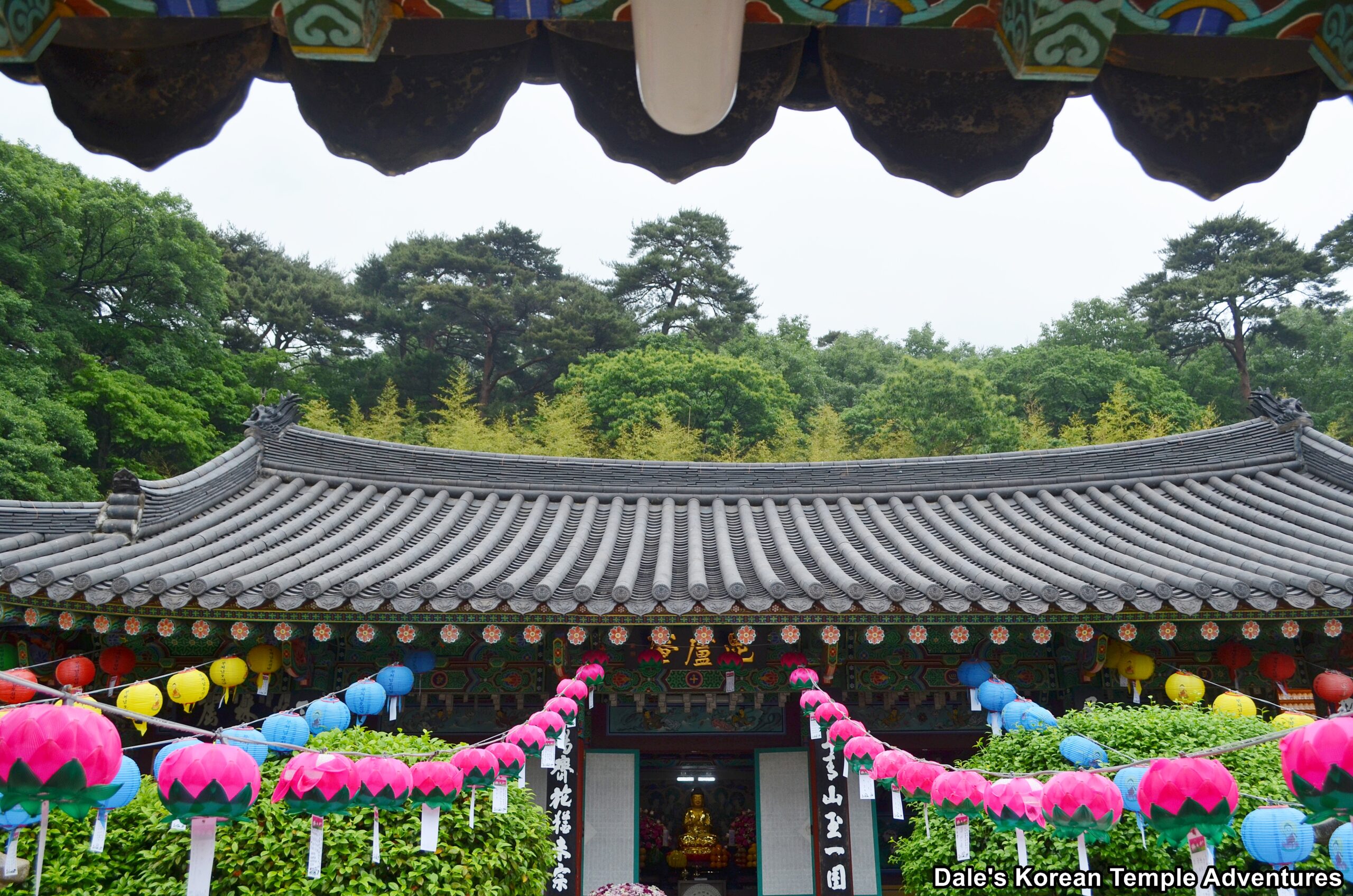
Hermitage History
Biroam Hermitage is located on the Tongdosa Temple grounds in Yangsan, Gyeongsangnam-do in the southern foothills of Mt. Yeongchuksan (1,082.2 m) some 500 metres away from the neighbouring Geukrakam Hermitage. Biroam Hemritage is named after the Buddha of Cosmic Energy, Birojana-bul.
It’s recorded that Biroam Hermitage was first founded in 1345 by the monk Yeongsuk. The hermitage would be rebuilt in 1578 by the monk Taeheum. Biroam Hermitage was completely destroyed during the Imjin War (1592-1598), and it was later rebuilt and reconstructed several more times.
In total, Biroam Hermitage is home to one protected property, which is a Gyeongsangnam-do Tangible Cultural Property. The protected property is the “Biroam Taenghwa,” which is housed inside the Daeung-jeon Hall at Biroam Hermitage.
Hermitage Layout
As you first approach the hermitage grounds, you’ll need to pass through the Cheonwangmun Gate. On the front walls, you’ll find two guardians. Stepping inside the narrow corridor that leads through this entry gate, you’ll find four painted images dedicated to the Four Heavenly Kings. And on the ceiling of the structure is a twising yellow dragon.
Having passed through the Cheongwangmun Gate, you’ll get a beautiful view of the well tended to grounds at Biroam Hermitage and a view of the valley below where Tongdosa Temple, and numerous other hermitages, are situated. To your left, and over a row of lower lying hedges, is your first glimpse at the shrine halls at the hermitage.
Passing through another entry gate, this time a four pillared structure, you’ll gain entry to the main hermitage grounds. Straight ahead of you is the beautiful Daeung-jeon Hall. The main hall is fronted by a modern three-story pagoda to the left and an equally modern seokdeung (stone lantern) to the right of the stone stairs that leads up to the Daeung-jeon Hall. The exterior walls to the main hall are adorned with Bicheon (Flying Heavenly Deities) and a set of Shimu-do (Ox-Herding Murals). Stepping inside the Daeung-jeon Hall, you’ll find an solitary statue of Birojana-bul (The Buddha of Cosmic Energy) on the main altar. To the right of the main altar is a shrine dedicated to Jijang-bosal (The Bodhisattva of the Afterlife). And to the left of the main altar is the historic “Biroam Taenghwa” that dates back to the late Joseon Dynasty (1392-1910). As for the rest of the interior of the main hall, you’ll find wall murals of monks, a phoenix and dragons adorning the beams of the structure.
To the immediate right of the Daeung-jeon Hall is a rather non-descript administrative office. To the front left of the main hall, and next to the three-story stone pagoda, is the hermitage’s koi pond with a wooden water wheel. But it’s to the left rear of the Daeung-jeon Hall that you’ll find one of the major highlights to the hermitage.
The Bukgeuk-jeon Hall is dedicated to Chilseong (The Seven Stars). Like Anyangam Hermitage and Geukrakam Hermitage, the Tongdosa Temple hermitages largely venerate and worship the shamanic deity Chilseong. And while this shaman shrine hall is primarily dedicated to Chilseong, it actually functions as a Samseong-gak Hall with additional murals dedicated to Sanshin (The Mountain Spirit) and Dokseong (The Lonely Saint) housed inside it. The original murals are now housed inside the Tongdosa Temple museum, these reproductions housed inside the Bukgeuk-jeon Hall of Chilseong, Sanshin, and Dokseong, are faithful to the originals. The original of Dokseong housed inside the Tongdosa Temple museum dates back to 1899 as does the Sanshin mural. The original central image dedicated to Chilseong was produced a few years later in 1904.
As for the designs of each mural, the central reproduction dedicated to Chilseong is a wonderfully vibrant mural dominated by blue tones and various constellations marked by white circles surrounded by a solid red lines. In the centre of the mural is a cloud burst with various figures that include Jeseok-cheon (Indra), Wolgwang-bosal (The Moonlight Bodhisattva), Ilgwang (The Sunlight Bodhisattva), and Bukseong (The Northern Star). This beautiful mural is fronted by a glass enclosure with a golden statue of Birojana-bul inside. To the left of this central image is a painting dedicated to Sanshin (The Mountain Spirit) with a devilish-looking tiger at his side. And finally, the image to the right is dedicated to Dokseong (The Lonely Saint) looking down at some swirling incense with his long white eyebrows.
The exterior walls to the Bukgeuk-jeon Hall are adorned with a set of murals that depict the life-cycle from birth to death. Also near the signboard to the shaman shrine hall are some beautifully carved and painted dragon heads.
The only other structure at the hermitage, and off-limits to the general public, are the monks’ dorms to the left of the koi pond. But as a whole, the entire hermitage grounds are both beautiful and well tended to.
How To Get There
From Busan, you’ll first need to get to the Nopo subway stop, which is stop #134. From there, go to the intercity bus terminal. From the intercity bus terminal get a bus bound for Tongdosa Temple. The ride should last about 25 minutes. The buses leave every 20 minutes from 6:30 a.m. to 9:00 p.m. From where the bus drops you off at the Tongdosa Temple bus stop, you’ll need to walk an additional 10 minutes to the temple grounds west of the bus stop.
From Tongdosa Temple, you’ll need to continue up the main road for another 700 metres until you come to a fork in the road. Instead of heading straight, turn right and continue heading in that direction for two kilometres. The road forks to the left and right: left to Jajangam Hermitage and right to Biroam Hermitage. Follow the fork that heads right. And when the road forks once more to the left and right, the left leads to Geukrakam Hermitage and the right continues on towards your final destination of Biroam Hermitage.
Overall Rating: 5.5/10
The obvious main highlight to Biroam Hermitage is all the artwork that fills this historic hermitage. Of particular interest are the replicas of the historic shaman murals inside the Bukgeuk-jeon Hall, especially the central image dedicated to Chilseong (The Seven Stars). Also of interest is the “Biroam Taenghwa” housed inside the Daeung-jeon Hall to the left of the main altar. Finally, all the natural beauty that surrounds Biroam Hermitage like the towering peaks of Mt. Yeongchuksan to the north, the sprawling valley below to the south, and all the beautiful flowers and shrubbery that are well-tended to at Biroam Hermitage makes this hermitage one of the more beautiful hermitages to visit at Tongdosa Temple.
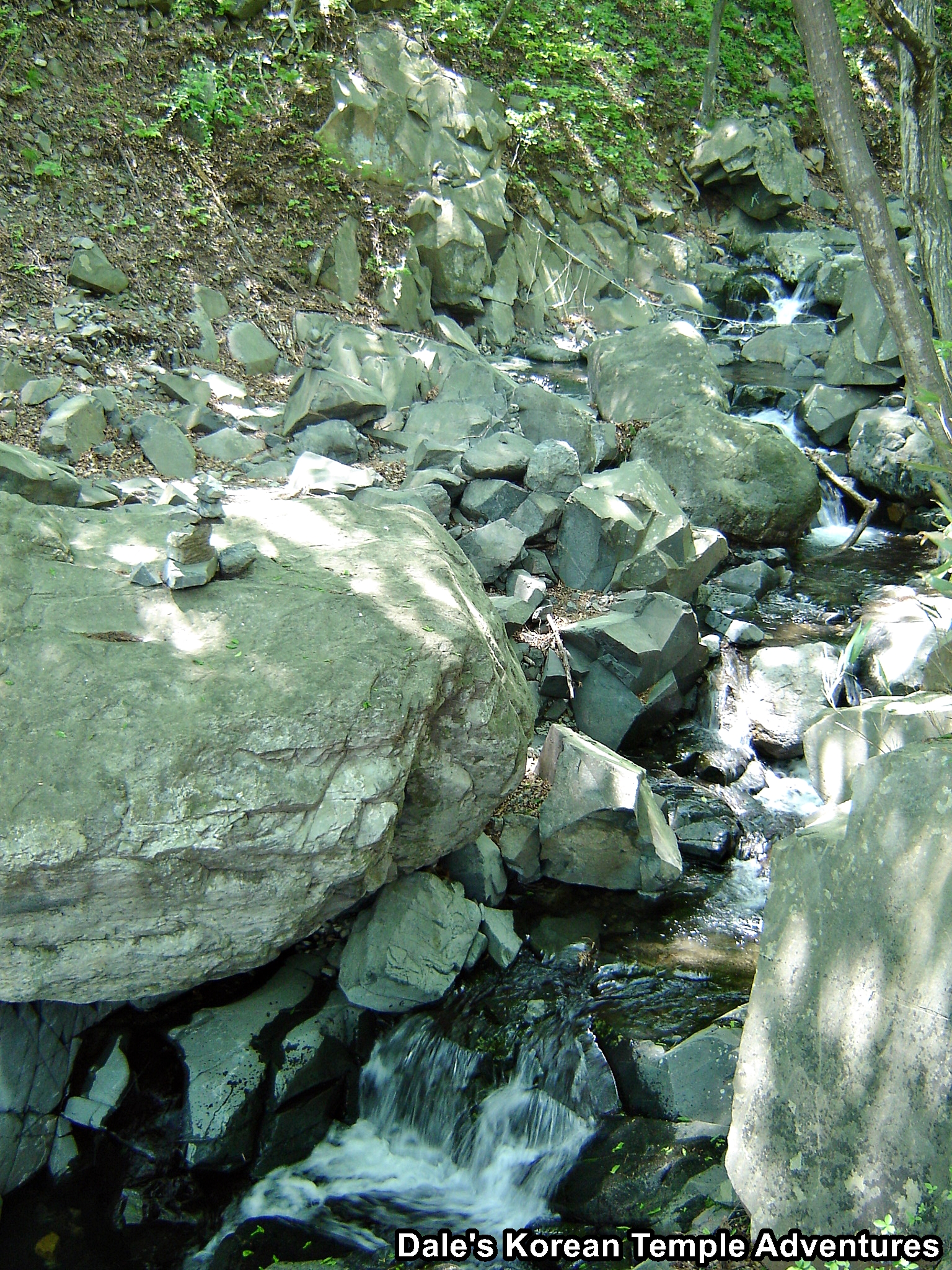
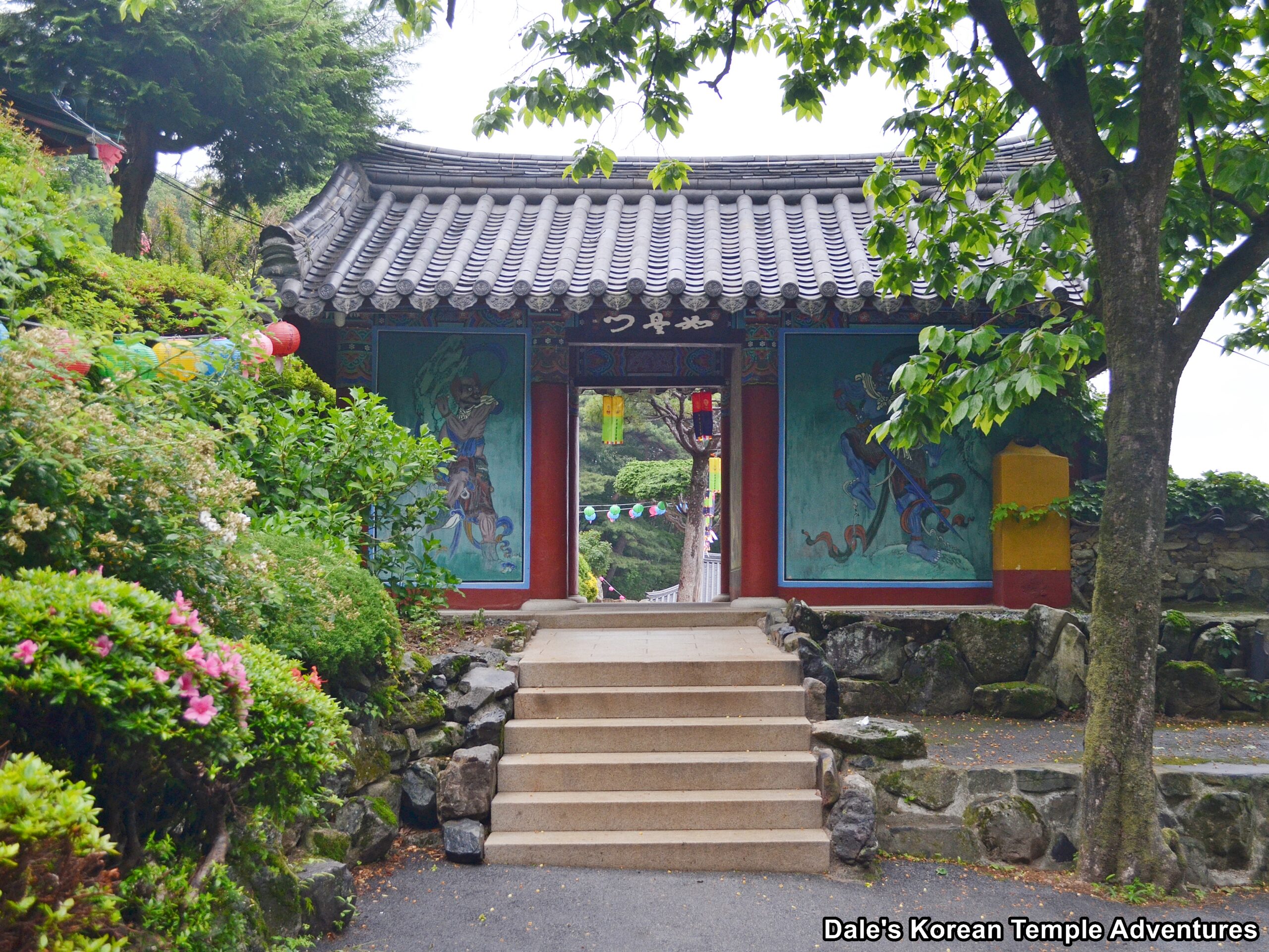
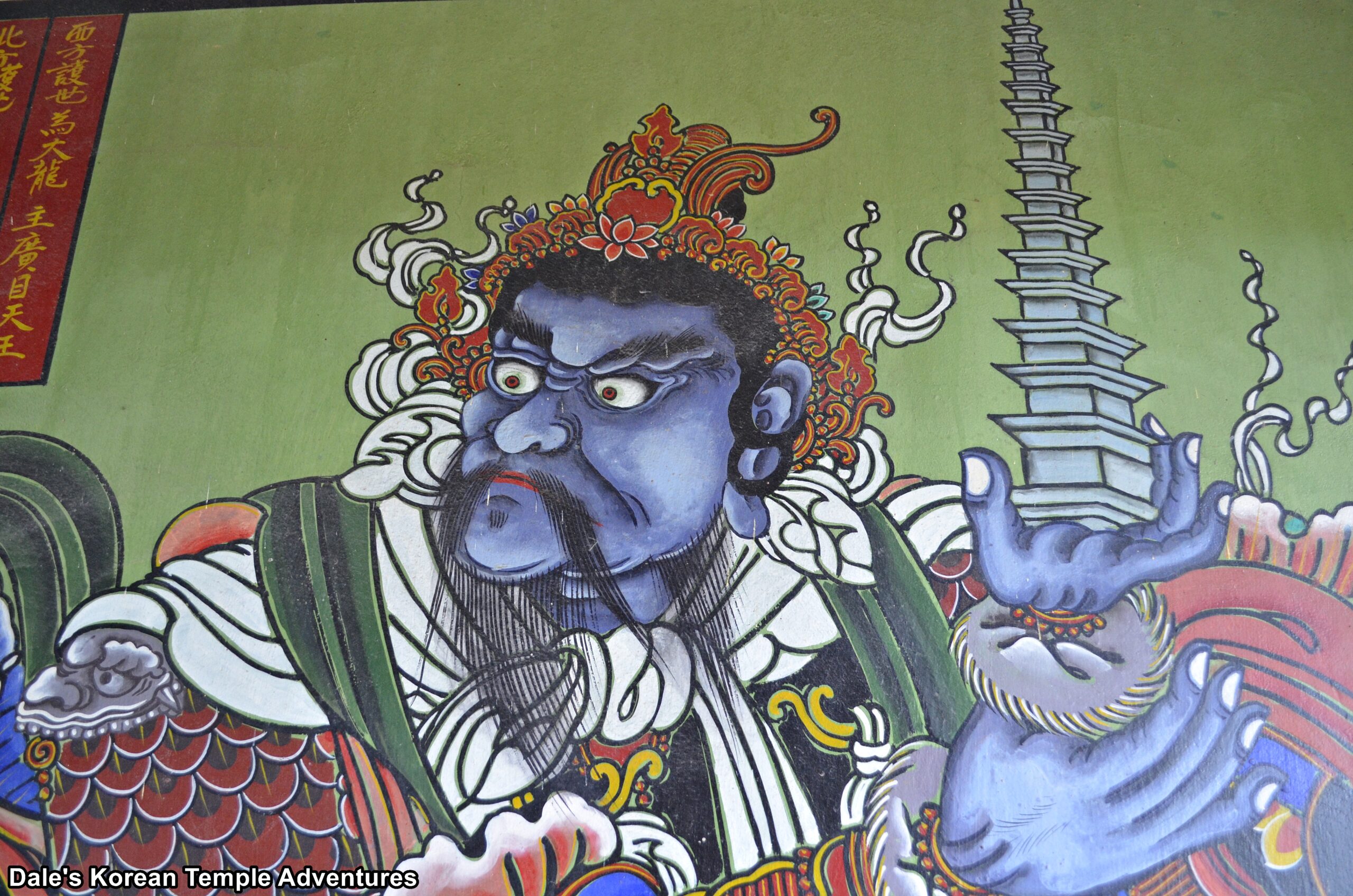

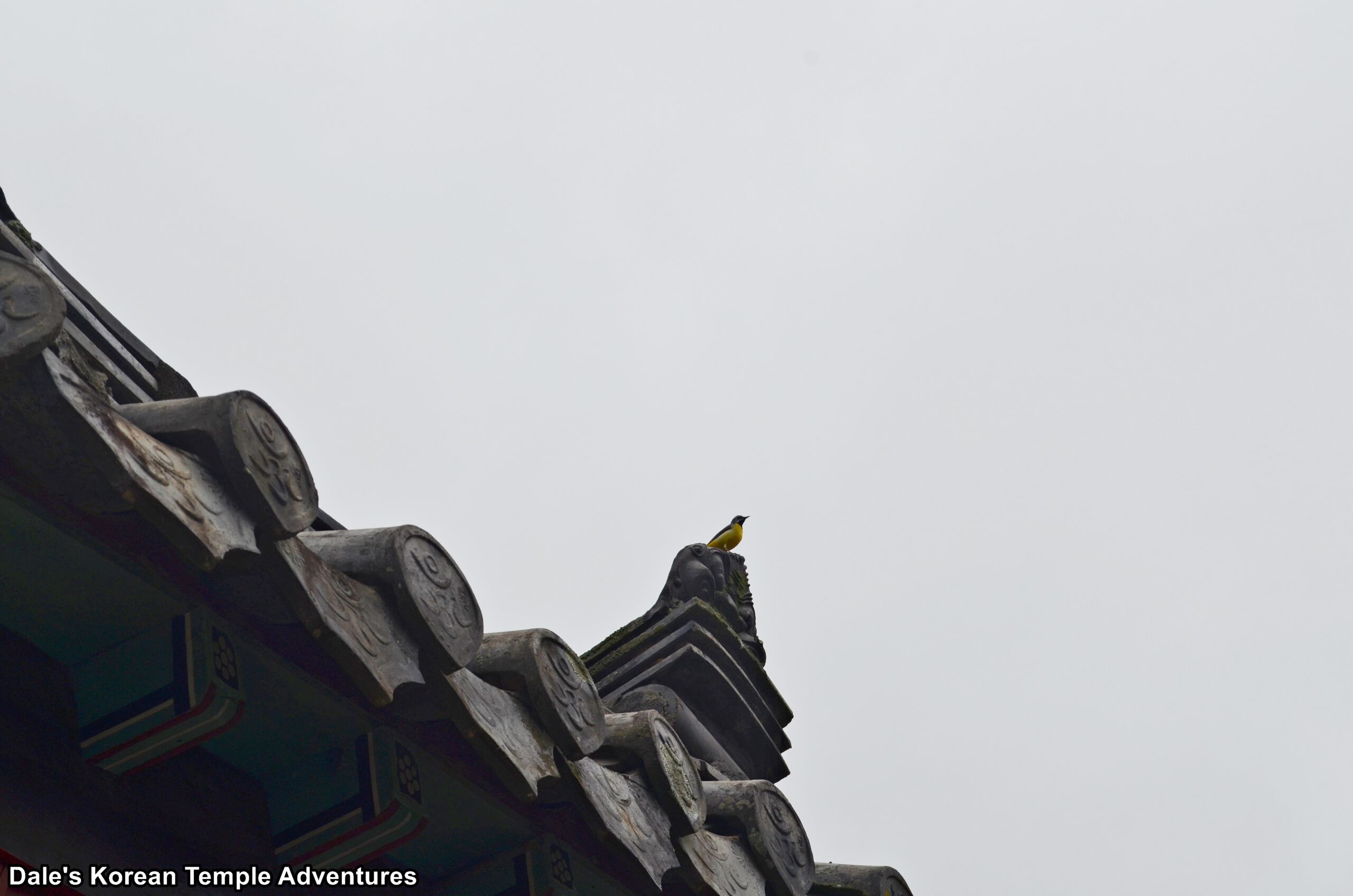

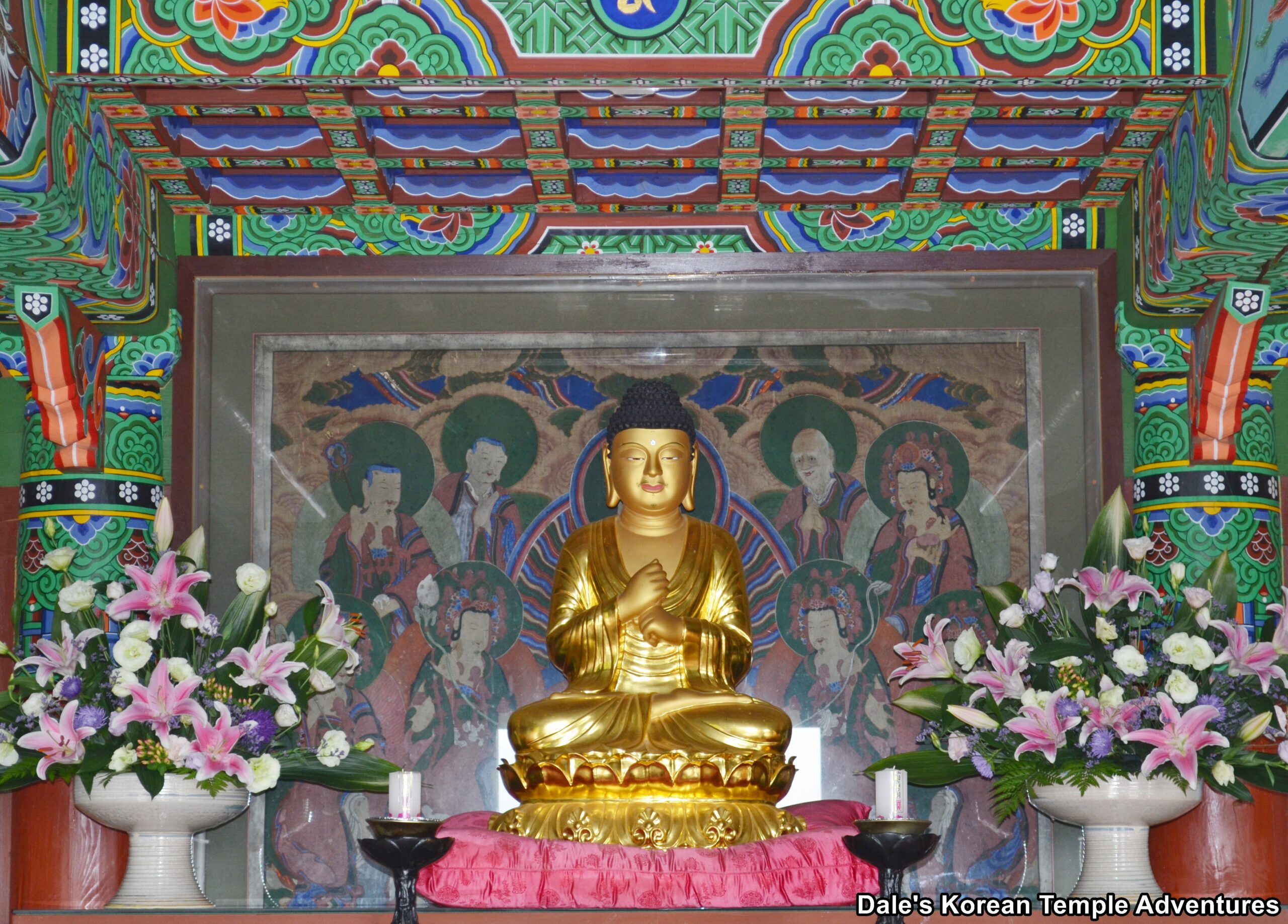
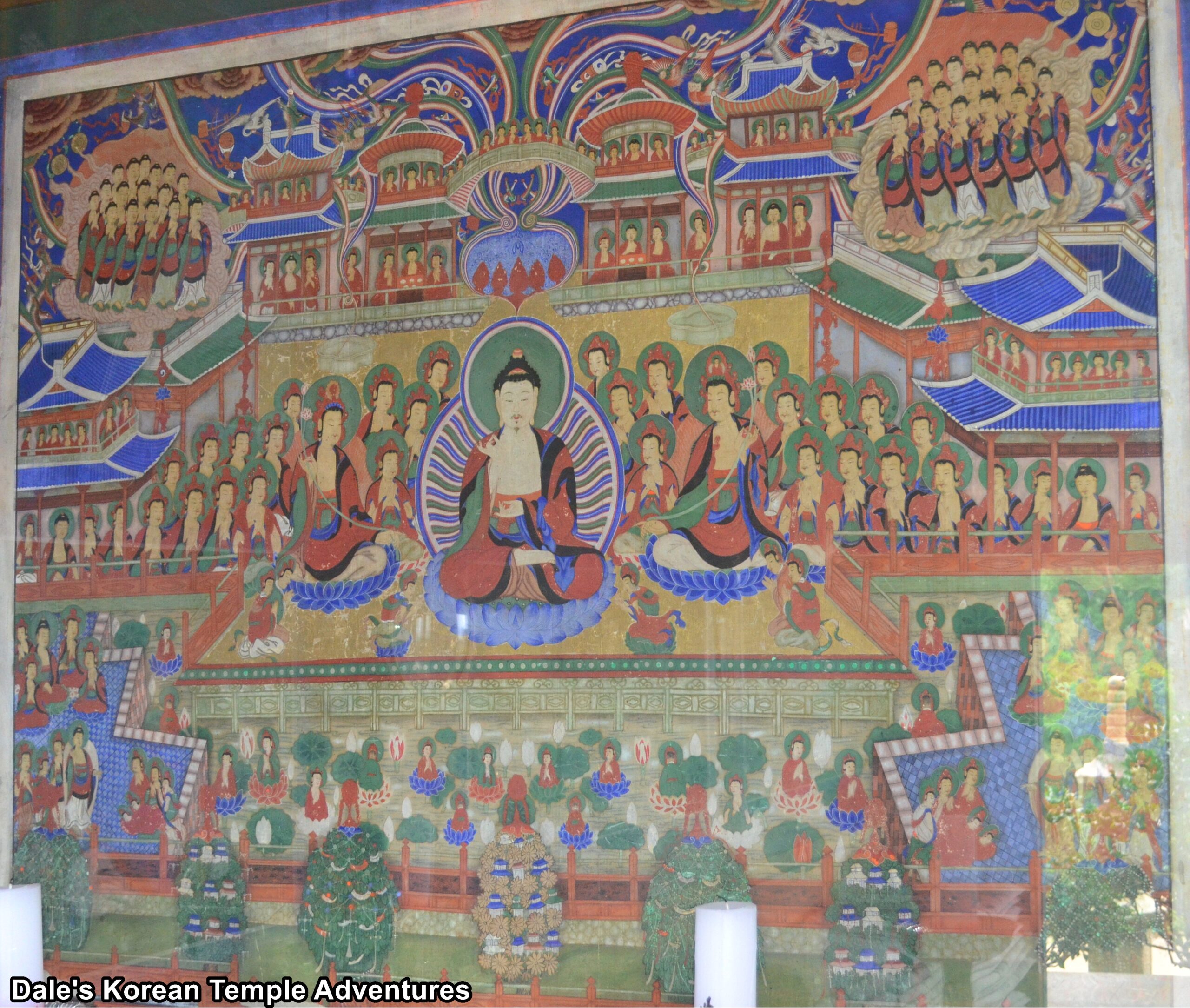
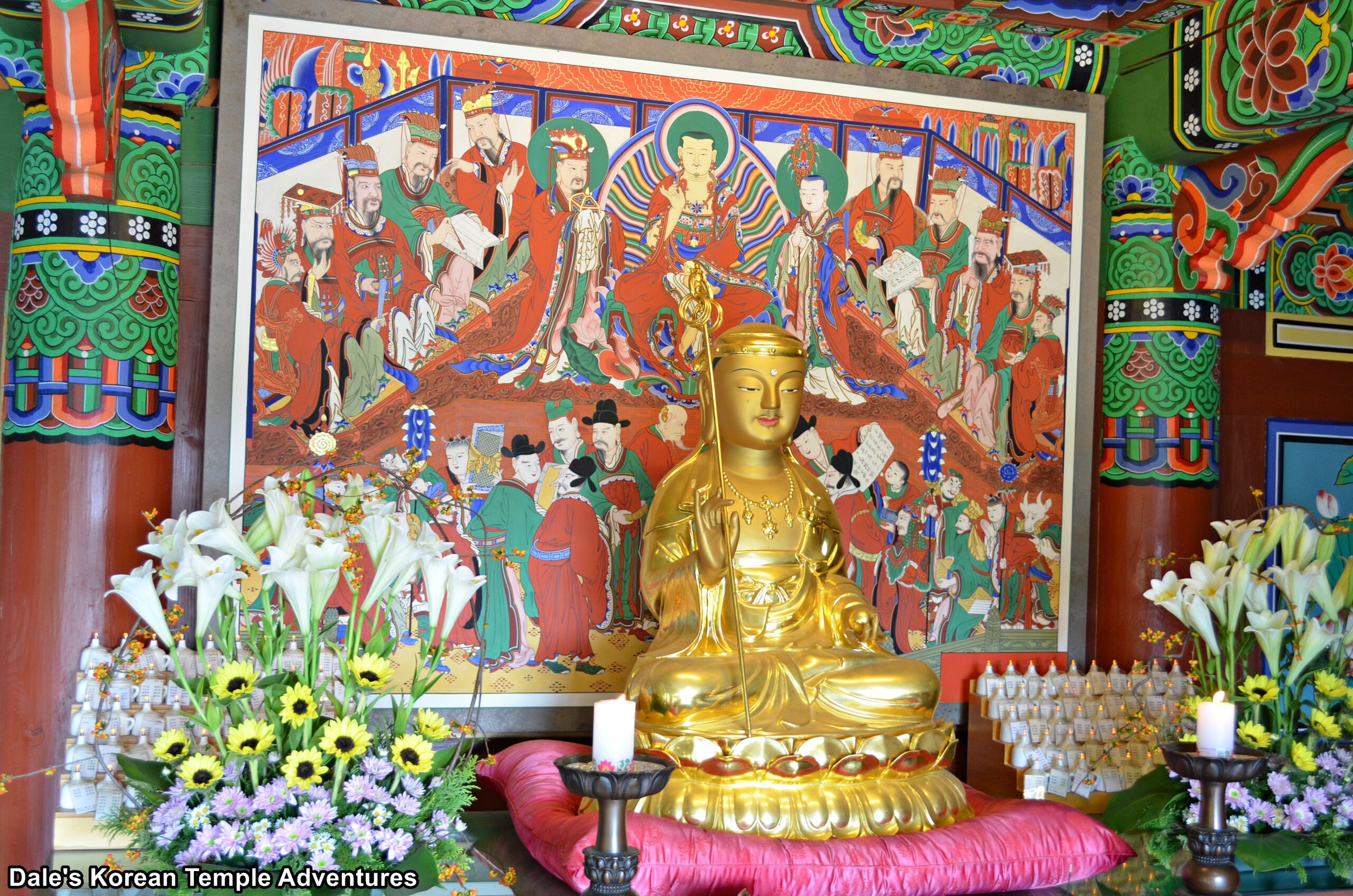
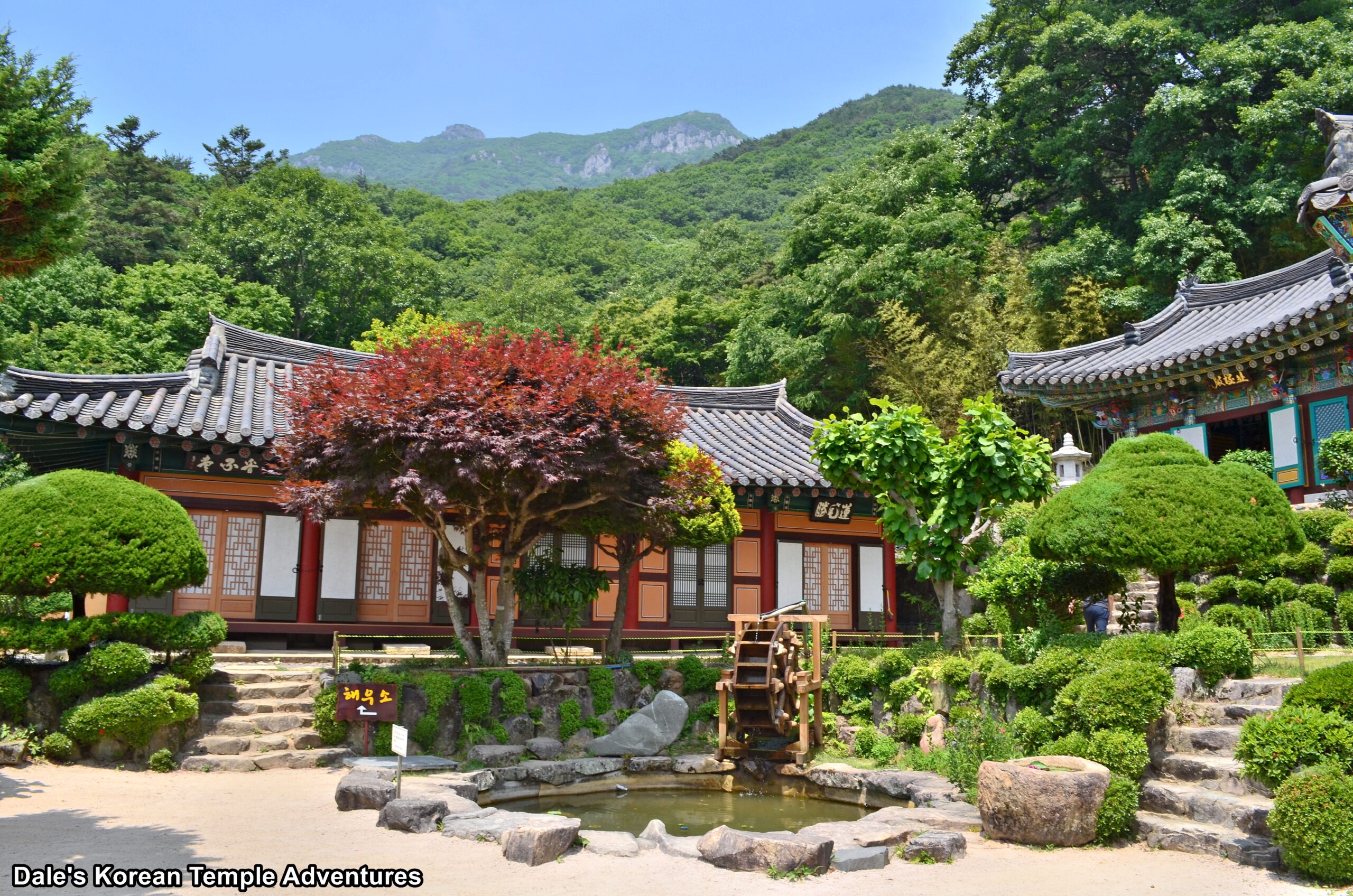
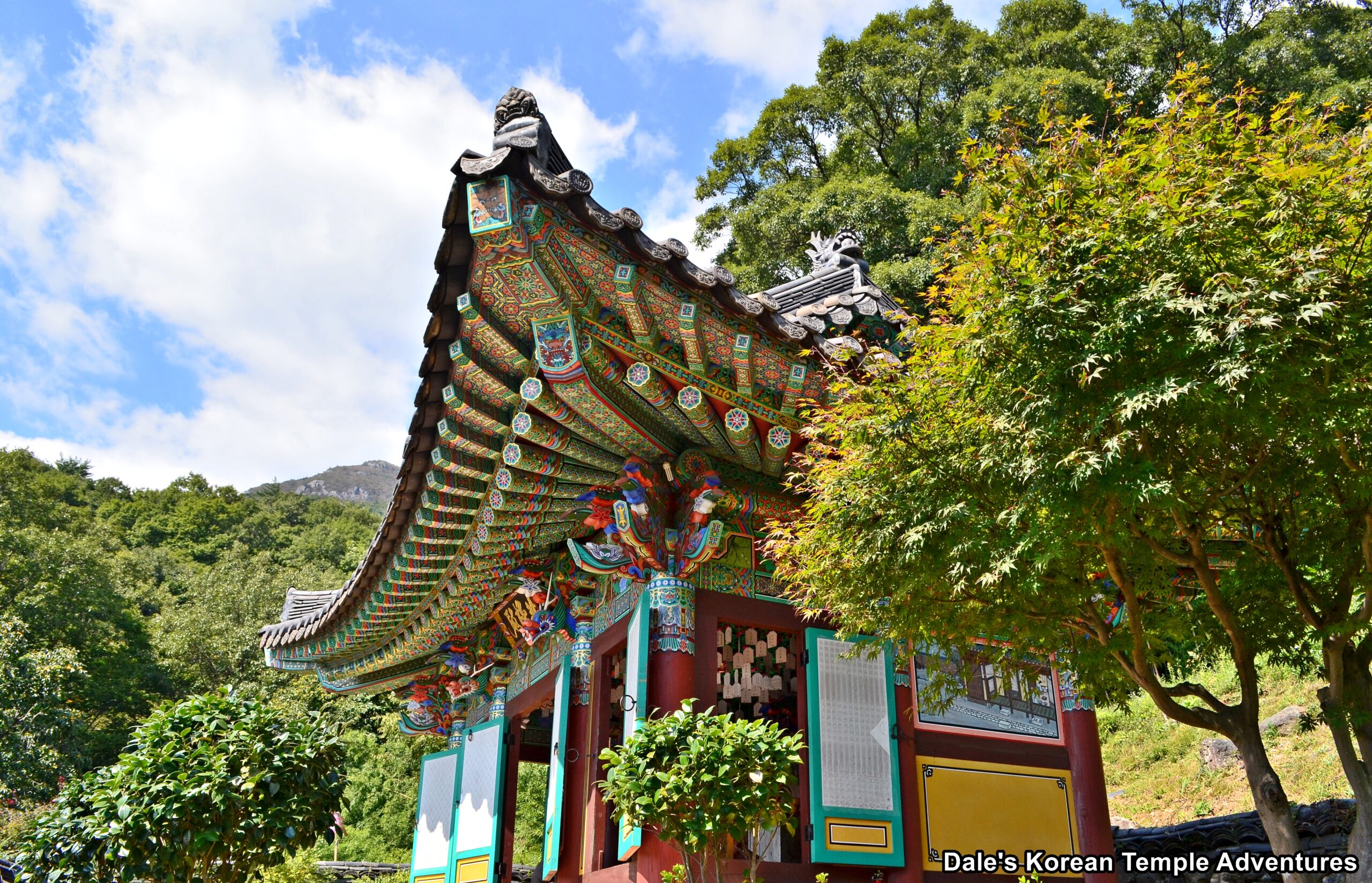
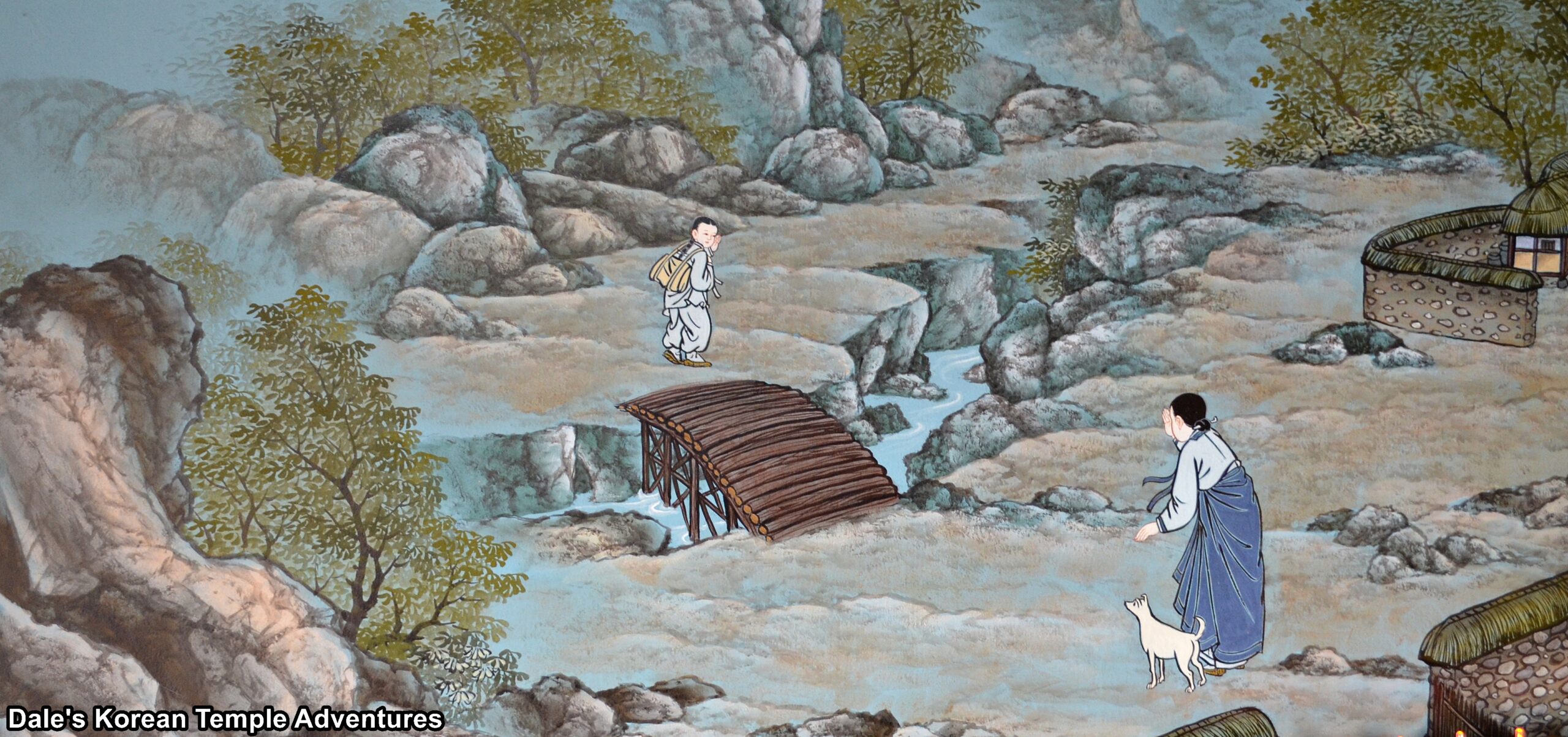

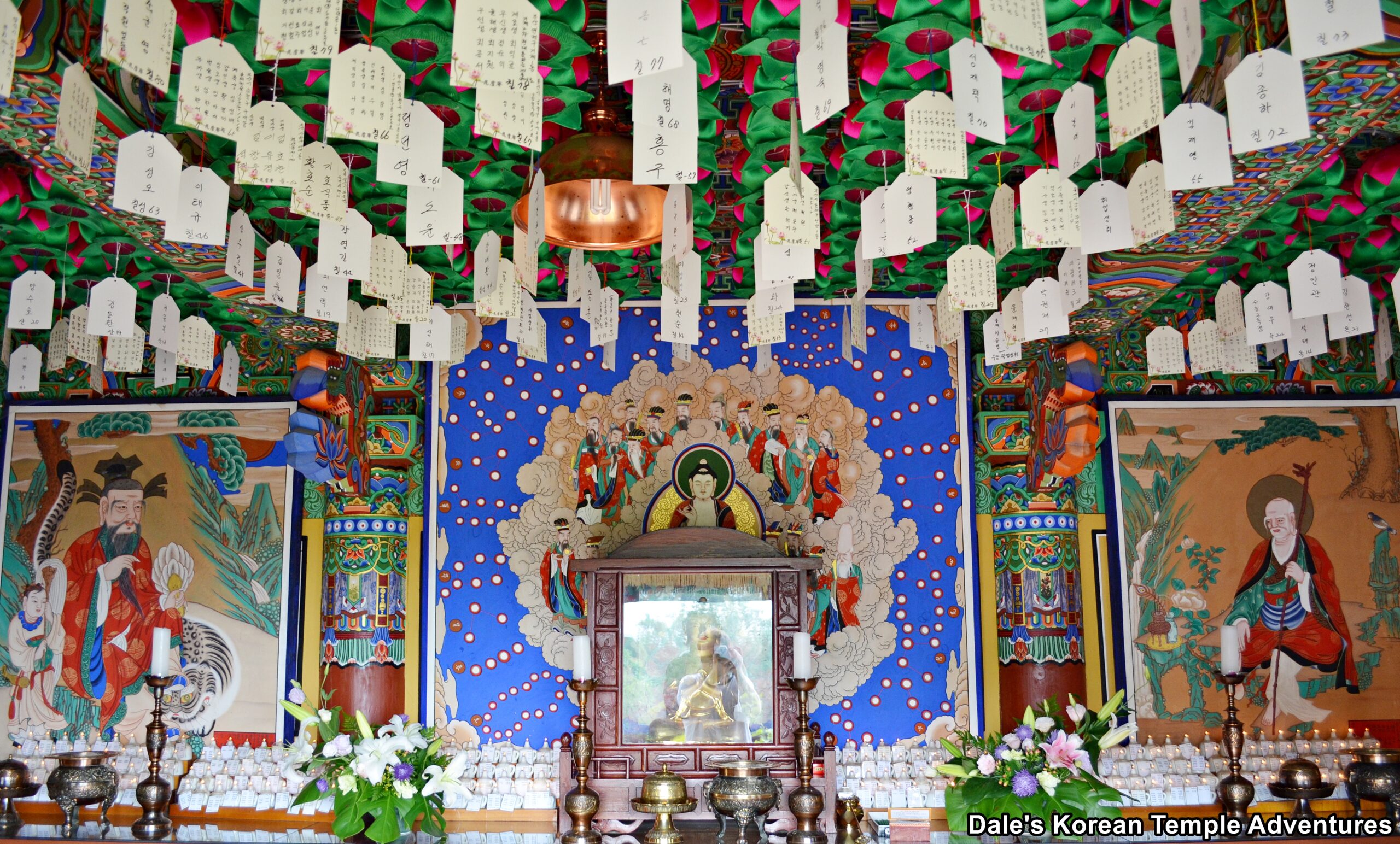
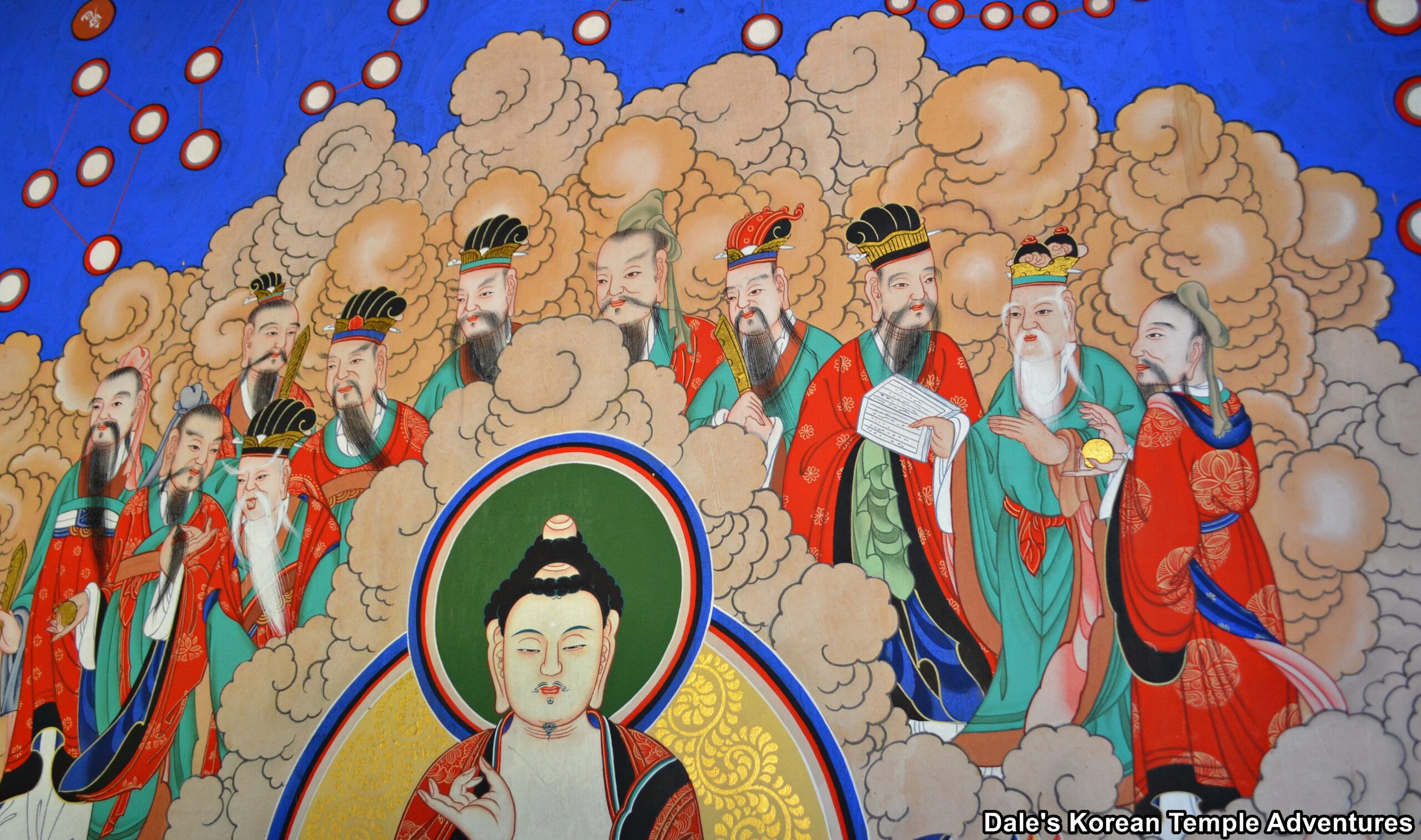
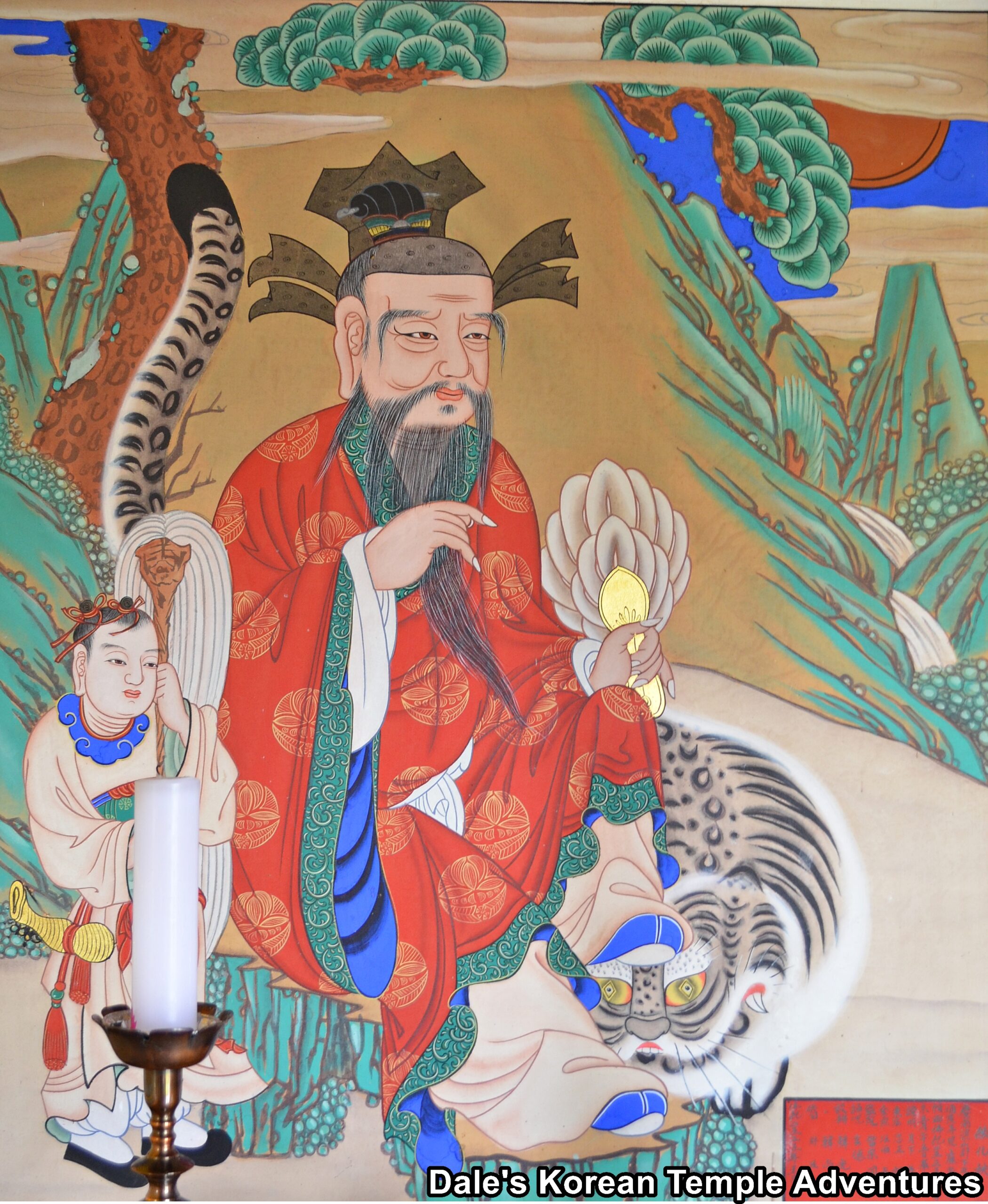
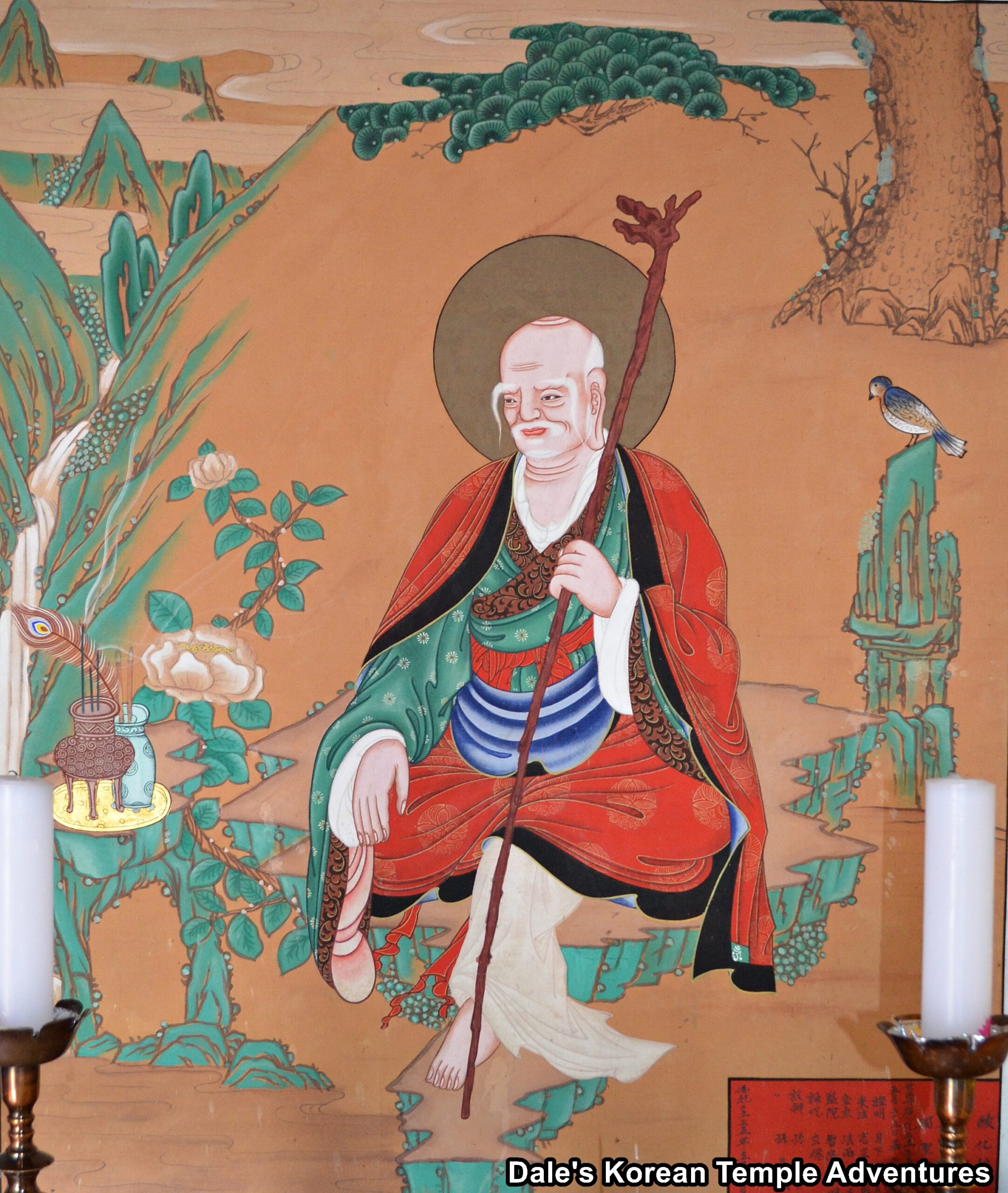


Recent comments